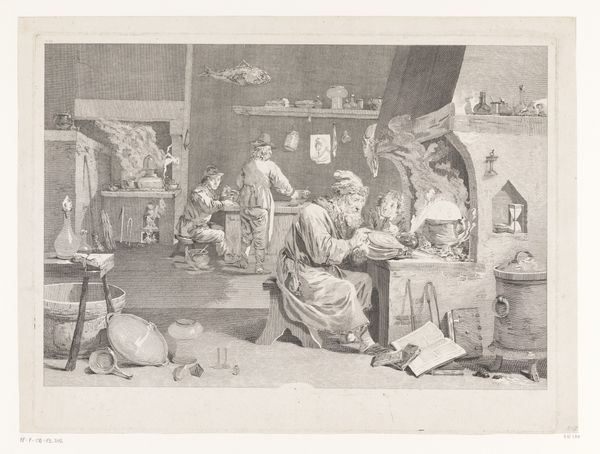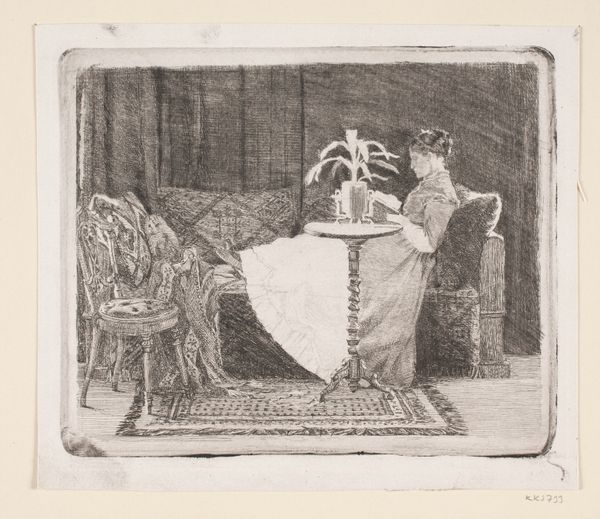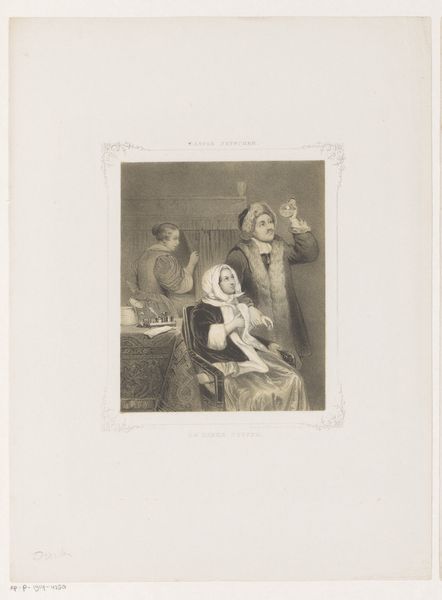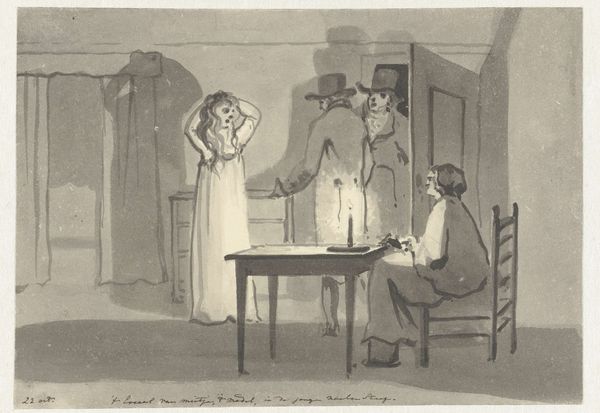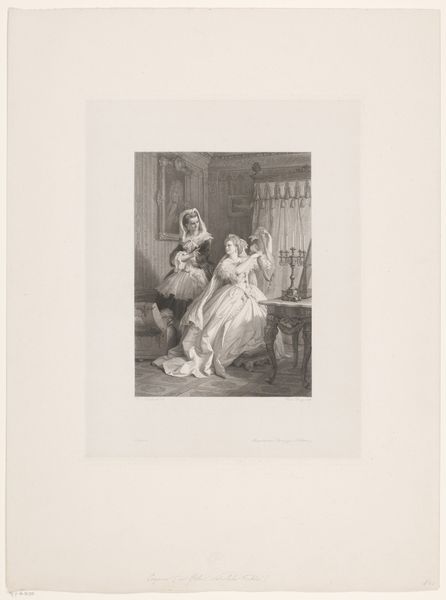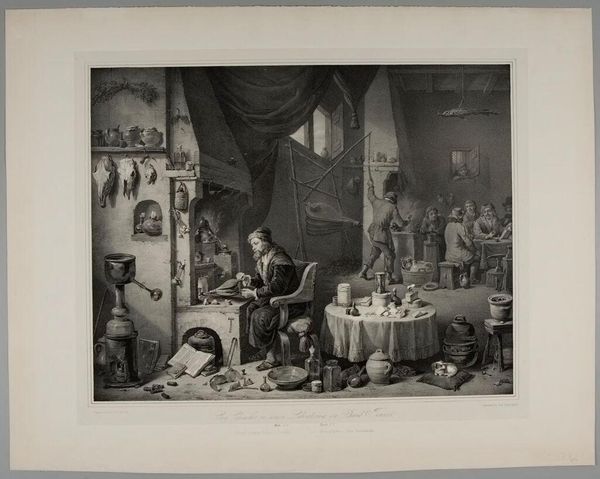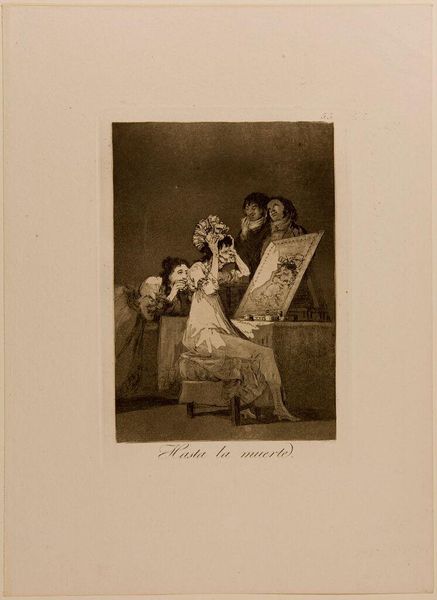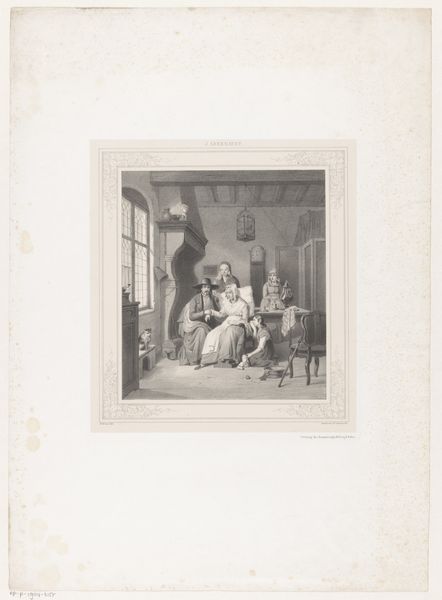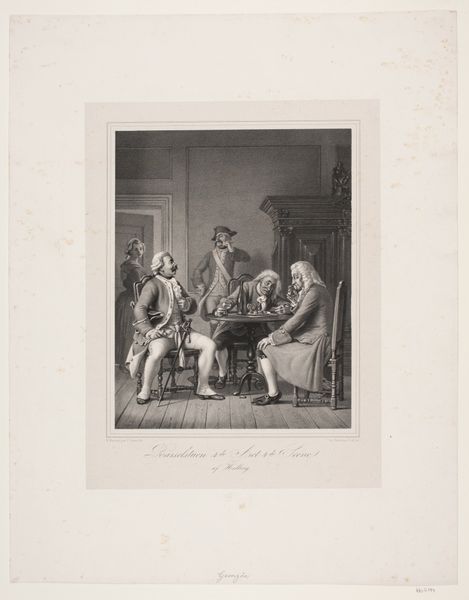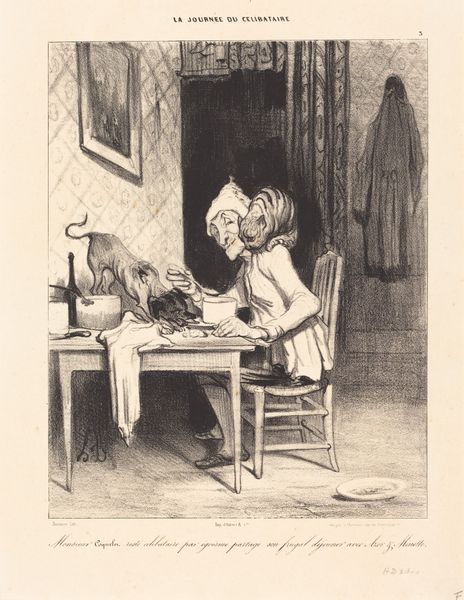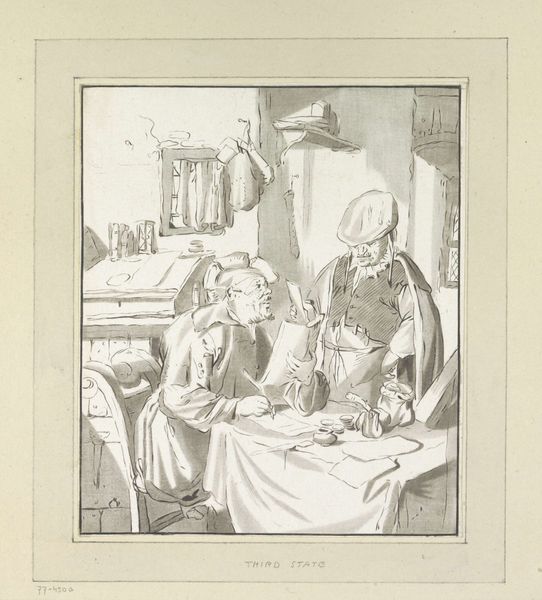
Copyright: Richard Hamilton,Fair Use
Editor: So this is Richard Hamilton’s "Picasso’s meninas" from 1973, a mixed-media print. The image is primarily black and white, portraying a gathering of figures that feel somewhat ghostly and disjointed. It strikes me as both familiar and unsettling, like a half-remembered dream. What do you see in this piece, considering the history around it? Curator: It's fascinating how Hamilton appropriates and reinterprets Velázquez’s "Las Meninas" through the lens of Picasso, isn’t it? What stands out is the layered nature of appropriation itself: Velazquez painting the royal family, Picasso reinterpreting Velazquez, and Hamilton building upon that foundation using Pop Art aesthetics. Editor: So it’s like a conversation across centuries and styles. I'm wondering why Hamilton chose to engage with these specific paintings? Curator: Exactly. It reveals Hamilton's commentary on the museum space, where art pieces are preserved, studied, and constantly re-evaluated. He is exploring the role of reproduction and its impact on art perception in contemporary society. The fractured imagery almost mirrors the fragmented way we engage with art today. Do you notice the ghostly traces? Editor: Yes, they suggest how images linger in our collective consciousness. Almost like faint recollections of Velázquez and Picasso that don’t quite come together. Curator: Precisely. Hamilton raises pertinent questions regarding the socio-political significance of imagery. He urges us to contemplate art’s public function as an agent that can either contest or solidify already present viewpoints in society. A print is reproducible media: this democratizes image availability. It gives public a wide lens of engaging with art history. Editor: It's definitely made me rethink the act of seeing – how context, history, and reproduction all shape our understanding. I can really start to view the piece now from all the complex conversation it entails. Curator: Agreed. By examining the different ways images are utilized by institutions such as galleries and museums, it really gets you thinking about how images acquire the power to influence society’s opinion.
Comments
No comments
Be the first to comment and join the conversation on the ultimate creative platform.

